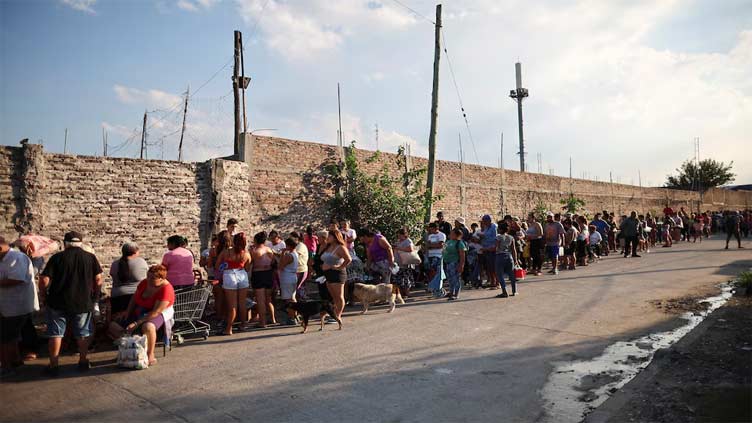Milei's austerity seen pushing half of Argentina into poverty

World
Argentina will publish poverty data on Thursday
BUENOS AIRES (Reuters) - Irma Casal, a 53-year-old in Buenos Aires, works three shifts as a garbage recycler, cardboard collector and bricklayer, but, like many Argentines at a time of rising poverty, she still struggles to make ends meet.
Argentina will publish poverty data on Thursday that is expected to show the rate soaring to over 50% in the first six months of the term of libertarian President Javier Milei, who has enacted tough austerity measures in a bid to dig the country out of debt.
"Since this government came to power, jobs have dropped away. We work twice as hard for less and we have to keep going," said Casal, who has 14 children and 42 grandchildren, in the low-income Buenos Aires suburb of Villa Fiorito.
The official data for the January-June period will be the first hard evidence of how far poverty has risen since Milei took over in December. The official poverty rate was 41.7% for the second half of 2023.
Milei's spending cuts have been cheered by markets and investors for helping right the state's finances after years of deficits, but have pushed the country into a deep recession, although there are signs the economy could now be bottoming out.
The Catholic University of Argentina's (UCA) observatory estimates the poverty rate soared to 55.5% in the first quarter of the year before easing to 49.4% in the second quarter. That gives a 52% average for the first six months.
Agustin Salvia, director of the UCA's Observatory, said that there was a significant impact at the start of the year from Milei's policies, citing the closure of soup kitchens and reduction of government subsidies. However, there had been signs of an improvement recently, he added.

"If you look at the whole story, is shows a deterioration in the first quarter. That situation has since started to ease," he said.
The Secretariat of Childhood, Adolescence and Family told Reuters this week that the government had expanded two welfare programs, the Universal Child Allowance and a Food Card program, which was helping support many families.



